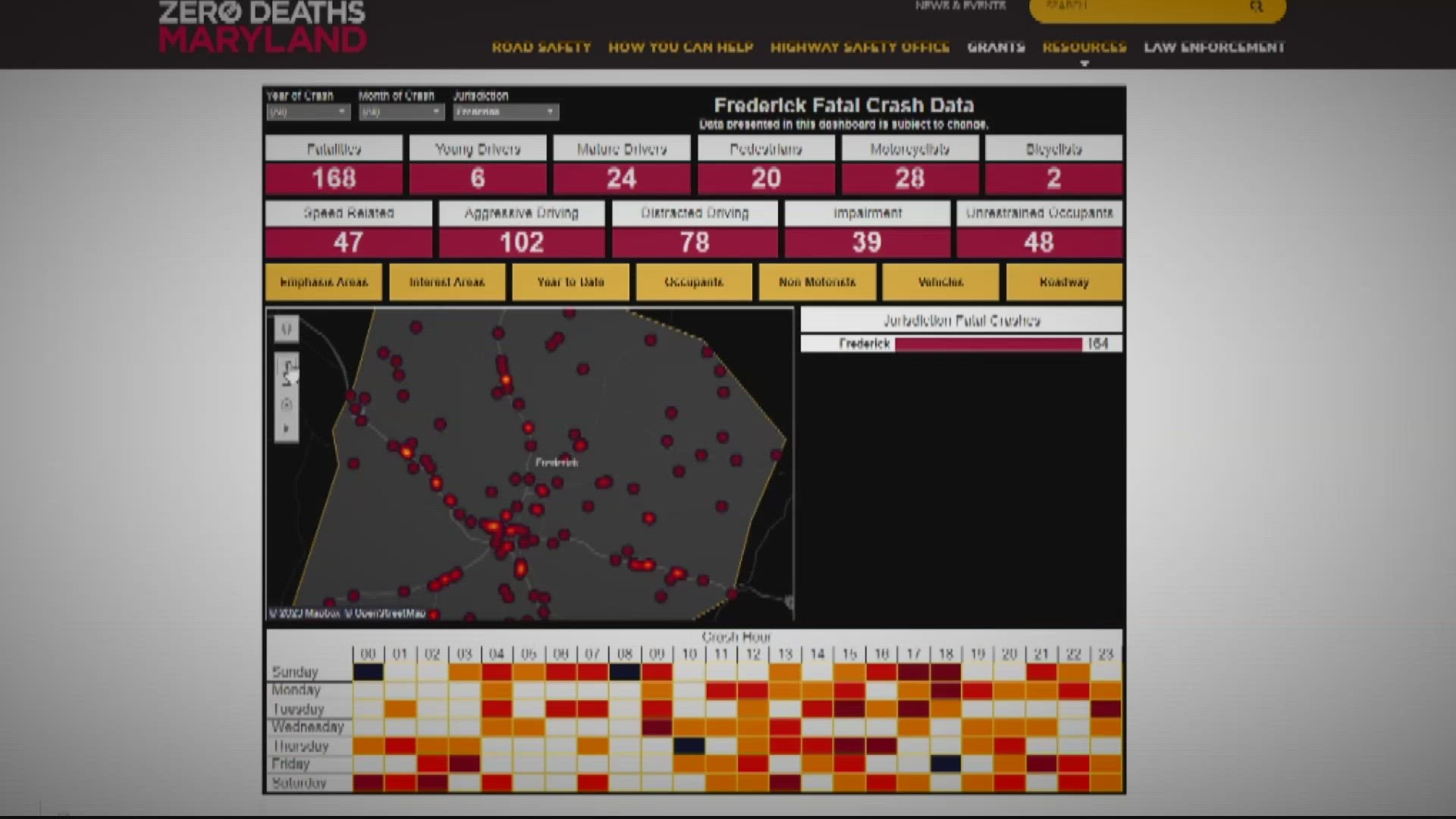MARYLAND, USA — The Maryland Department of Transportation has released a new crash data dashboard that gives users a detailed look at where collisions happen most frequently in the state.
About a week ago, the state’s transportation leaders gathered to unveil the tool in Anne Arundel County during a highway safety summit.
The dashboard details not only where crashes have happened, but everything from the weather at the time the crash occurred to the age and genders of the drivers behind the wheel.
Chrissy Nizer, Administrator of MDOT’s Motor Vehicle Administration [MVA], said the tool was the result of multi-year collaboration between Maryland State Police, MVA’s Highway Safety Office, and the State Highway Administration.
“We really want to have a data driven approach to highway safety,” Nizer said.
She added the tool can help communities make informed decisions about local infrastructure and safety proposals.
“It’s law enforcement at the state and local level, our public works departments that are making roadway decisions about where to do infrastructure investments, where to put light signals and other things,” she said.
The database shows crash data in the state of Maryland going back to 2016.
It revealed, during that seven-year span, Prince George’s County has seen the most traffic fatalities on both state and locally maintained roads, despite being neither Maryland’s most populated or dense county.
Prince George’s County has experienced 723 fatal crashes in that period. Baltimore County, Baltimore City, and Montgomery County round out the top four deadliest counties for crashes with 470, 320, and 275 fatal crashes respectively.
On Thursday, Reginald Thornes, 57, of Capitol Heights, died after his motorcycle collided with a pedestrian at the intersection of Addison Road and Central Avenue, according to the Prince George’s County Police Department.
The pedestrian suffered serious injuries during the crash.
“Prince George’s County is always at the highest of vehicle miles traveled, which means there are just a lot of individuals out on the roadways driving,” Nizer said.
The county’s high number of congested thoroughfares, like Interstate 95, the Baltimore-Washington Parkway, and the Beltway don’t exactly influence its crash statistics for the better, admits Nizer.
Maryland 210, also known as Indian Head Highway, runs through the southern portion of Prince George’s County and has gained a reputation as a particularly deadly roadway as well.
Prince George’s resident, Reverend Doctor Robert L. Screen Sr., serves as the Lead facilitator of the 210 Traffic Safety Committee. His community-based group has fought for traffic safety improvements to Indian Head Highway for years.
“When we talk about Indian Head Highway, for Prince George’s County, we’re only talking about 14 miles of roadway,” he said. “In 14 miles of roadway, we’ve lost 89 people in the last 15 years.”
His committee recently helped pass legislation to double the amount of speed cameras on Maryland 210 from three to six.
He said they will prove to be an effective deterrent, adding there are simply too many drivers who forget the impact their cars can have on the communities around them.
“People feel impervious to the fact that it can never happen to them in terms of being part of an accident or provoking an accident,” he said. “But the cars themselves can very easily get control of your feeling that you are invincible and that you can do pretty much what you want to until you hit the other person.”
Nizer said the state is trying to decrease roadway deaths on state maintained roads through messaging efforts that implore people to slow down.
WUSA9 reached out to the Prince George's County Department of Public Works & Transportation to ask what it is trying to do to ensure the safety of drivers on local-maintained roads.
It received the following statement:
“Prince George’s County is very concerned about the unfortunate numbers of traffic crashes and fatalities on County roadways. Unfortunately, this trend is similar to the national pattern with the increasing conflicts of distracted driving, those driving under the influence, and speeding, among other factors involved. The County is acting aggressively in implementing Vision Zero, with a goal to eliminate roadway fatalities through a safe systems approach, looking comprehensively to incorporate the E’s of Equity, Education, Enforcement, Evaluation, Emergency Services, and Engineering.
In support of advancing our mission, the County has recently received almost $21 million as part of the new Federal Safe Streets for All program to create safer, more multi-modal streets in 7 targeted communities within the County’s High Injury Network (the corridors with the highest number of crashes weighted by severity). This funding, along with several million additional dollars included in the County’s FY 2024 proposed budget for safe streets projects, will help advance our goals and metrics as identified in the County’s Vision Zero Action Plan, which is also being updated in FY 24.”

